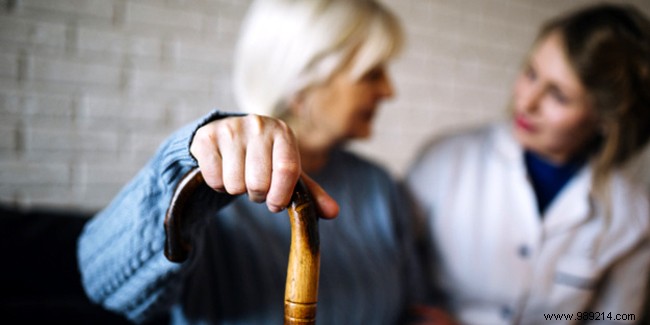
Long-term care units (USLD) designate structures for very dependent elderly people who require daily medical care. These units offer more advanced medical services than those that may be present in an accommodation establishment for dependent elderly people (Ehpad). This is why USLDs are most often part of a public or private hospital.
Long-term care units (USLD) are intended to accommodate people over the age of 60 who have almost completely lost their autonomy and who need daily medical care. This is why USLDs are considered hospital structures. They generally have a capacity of about thirty beds. These are places that used to be called “hospices”.
Most often, these elderly people enter a USLD following hospitalization or upon leaving aftercare and rehabilitation (SSR) after a hospital stay. However, a very dependent elderly person who needs day-to-day medical care and who still resides at home can also be admitted directly to a long-term care unit. Admission to a long-term care unit must be prescribed by a doctor, and on file.
Due to the need to provide their residents with medical care and ongoing medical supervision, a long-term care unit (USLD) is attached to a healthcare facility which may be public or private.
Intended for very dependent elderly people, in addition to accommodation, catering, entertainment, etc., USLDs offer specific services such as the continuous presence of health professionals who provide medical and nursing care, hygiene and comfort, personnel specialized in assisting residents with acts of daily living, since the people received in USLDs are most often bedridden.
The cost of a stay in a long-term care unit (USLD) covers roughly the same elements as in an accommodation establishment for dependent elderly people (Ehpad). The costs invoiced to the elderly resident are related to their accommodation (housing, catering, laundry maintenance, entertainment in common areas, etc.) in the structure, and to their personal support (help with washing, travel, etc.) .).
The costs payable by an elderly person residing in a USLD are based in particular on a so-called "dependency" daily rate. The latter is fixed for one year by the departmental council on which the structure depends and it is calculated according to the average level of dependence of the residents measured by the GIR, that is to say the degree of dependence of the elderly person. The higher this is (GIR level 1-2), the higher the dependency rate. However, USLD residents whose income is less than 2,479 euros per month do not pay the dependency rate corresponding to their GIR, but the lower one which corresponds to a less strong dependency.
On the other hand, the medical care received by a very dependent elderly person in a USLD is covered by health insurance and is not billed to the resident.
A very dependent elderly person who resides in a long-term care unit can claim various aids to help him pay the costs incumbent on him in such a structure.
Social assistance for accommodation is granted to people over the age of 65 (60 for those recognized as unfit for work) and who have less resources than the amount of accommodation costs applied in their USLD. This reception structure for very dependent people must also be authorized to receive beneficiaries of this social assistance.
The ASH is intended to cover all or part of the accommodation costs. To make a request, you must contact the municipal social action center (CCAS) of your municipality or your town hall.
Housing assistance in an establishment, which may be personalized housing assistance (APL) or social housing allowance (ALS), is paid to elderly people accommodated in a USLD if the structure is their main residence for at least 8 months. per year.
Several conditions, including in particular the authorization of the host structure, are required to benefit from one or other of these aids. Their calculation is based on the resources of the elderly person concerned, the cost of accommodation and the location of the USLD.
These housing aids can be requested from the family allowance fund (CAF) or the agricultural social mutuality (MSA) for retirees covered by this social protection scheme.
For an elderly person who lives in a USLD, the personalized autonomy allowance (APA) in an establishment allows him to help him pay the dependency rate corresponding to his GIR. This allowance does not take into account a means test to be paid.
The APA in establishments is paid directly to USLD residents if the establishment receives from the departmental council a global allocation of this allowance for all the residents it accommodates. Otherwise, residents must contact their departmental council directly to benefit from it.